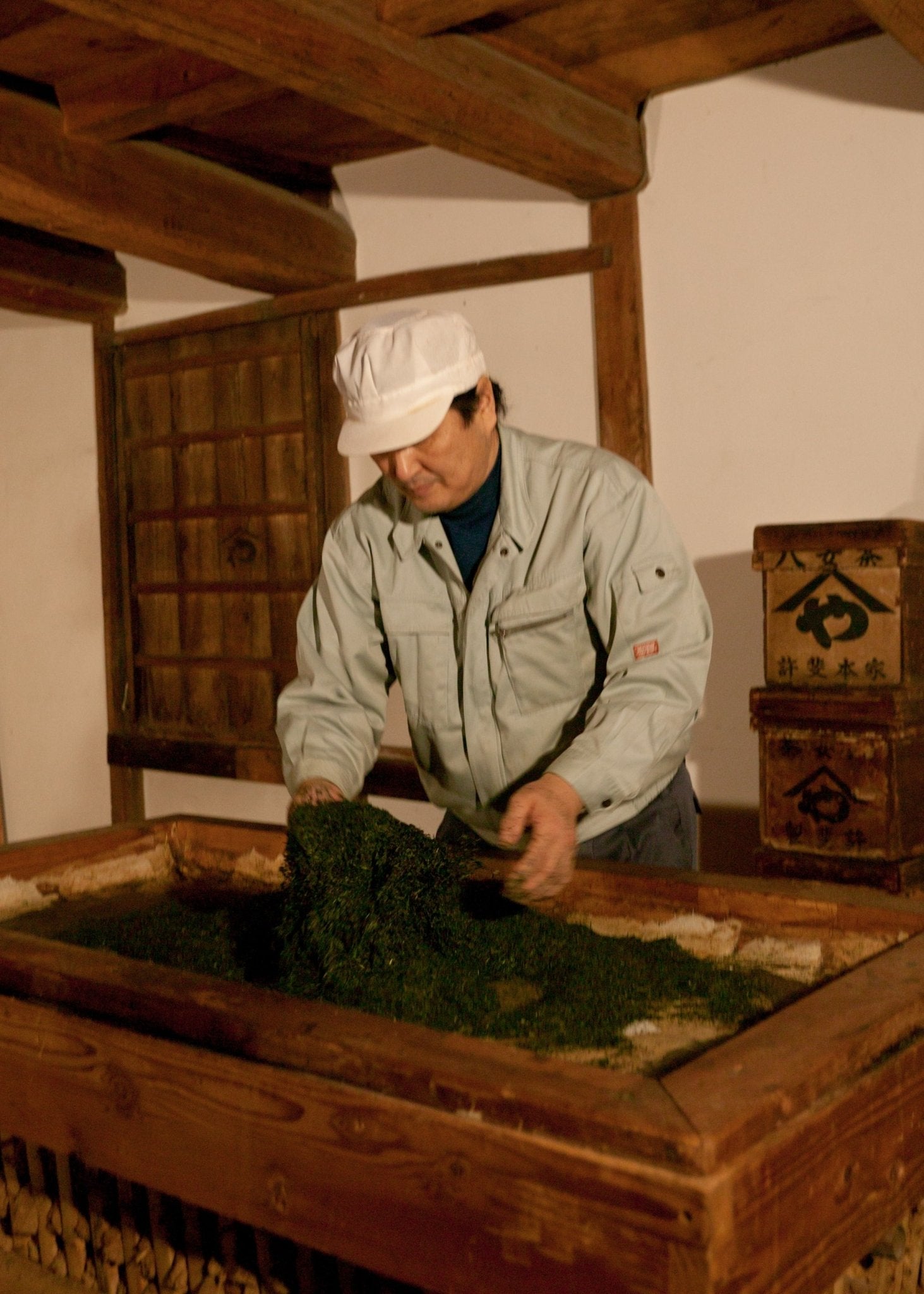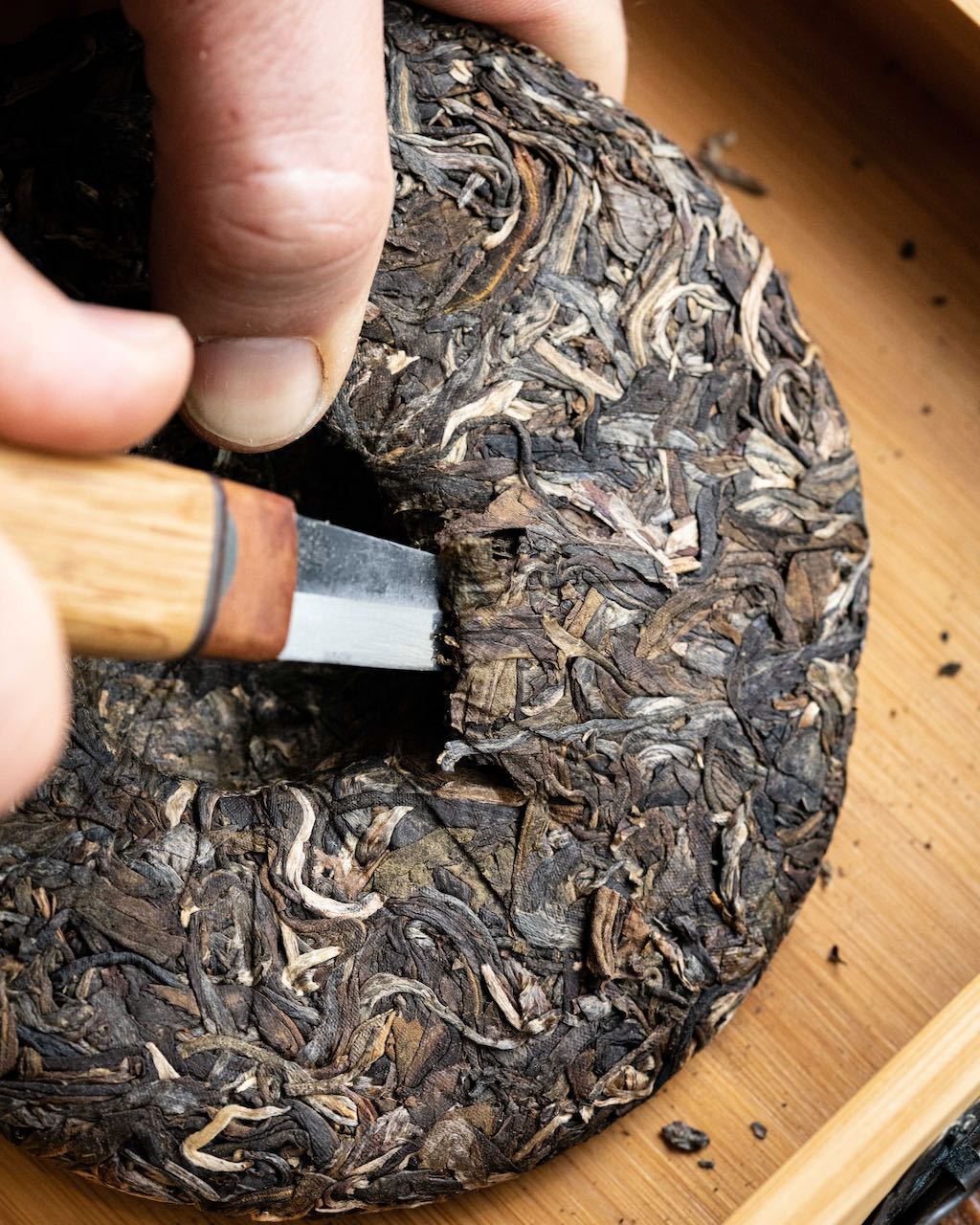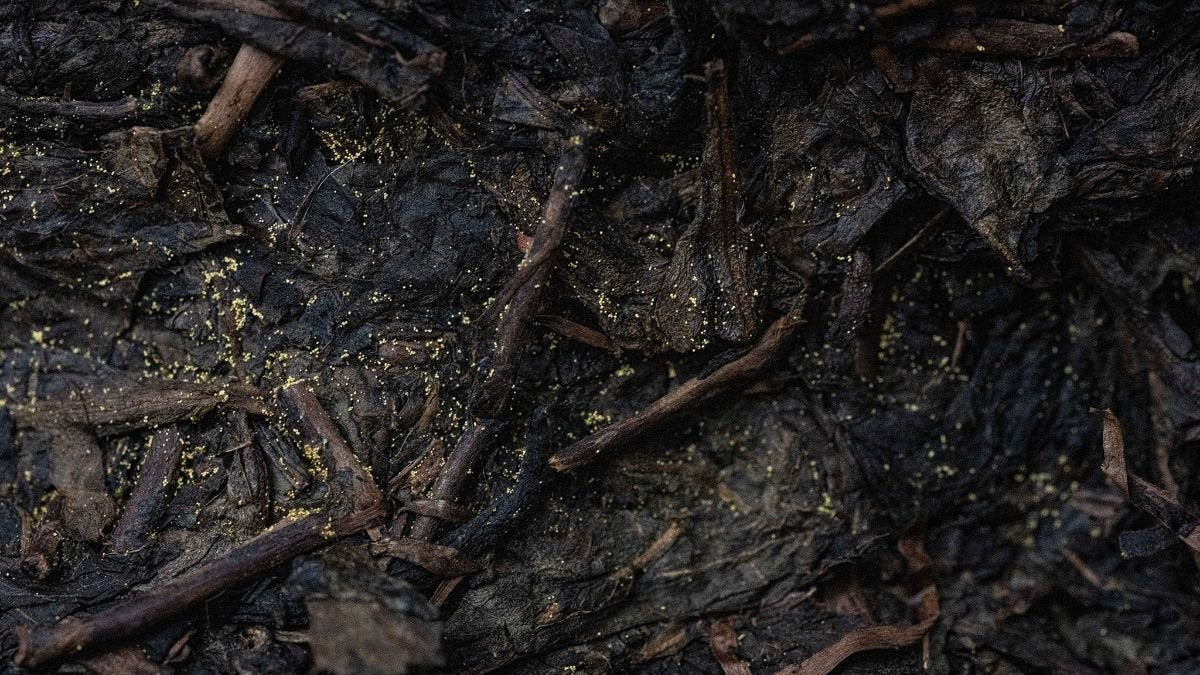Charcoal Finish Firing | Coaxing Lingering Sweetness and Aroma in Gyokuro

We've been fans of Konomi San's work since 2019; he introduced O5 to the art of 焙炉製法 (Hoiro seihō, or 'finish firing' of green tea, using high-density charcoal and Japanese traditional paper).
In 2020, we had the pleasure of enjoying some award-winning sencha processed with this technique; this year, Konomi San shared this stunning gyokuro.
Coaxing Lingering Sweetness and Aroma.
Finish firing (火入れ) is a most important process when crafting Japanese-style, steamed green tea. Not only is it important to reducing moisture content (thus preserving freshness for longer), but as our friend Jared from Jagasilk says, finish-firing 'develops the sugars and curb the tannins.' By the end of the Tokugawa Shogunate, it was already a well-established custom.
Most artisans in modern Japan use a drum roaster; electricity or gas fuel the 'fire'. Konomi San keeps an older tradition alive: 焙炉製法 (charcoal firing); it is a hands-on process that starts early in the morning, lighting a few chunks of charcoal and carefully supervising them until the artisan judges that they are ready. The inside of a 'firing table' (see below) is designed to contain these glowing embers.


Once the fire is ready, the shokunin (master artisan) covers the charcoal with a lid made of wood and finished with handcrafted paper. Then, with dance-like maneuvers, he carefully rolls the tea leaves, filling the room with a glorious aroma and developing the tea into a masterpiece.


ABOUT THE PRODUCER
Konomi San's family started their tea business in the Edo period; they were the first family to become tea merchants in the island of Kyushu. In that period, most of the local teas were kama-iri cha.
In the late Meiji period, Konomi's family were some of the pioneers that imported some production techniques from Uji; as a result of these pioneers, Yame is now famous for its stunning gyokuro and matcha.



Comments